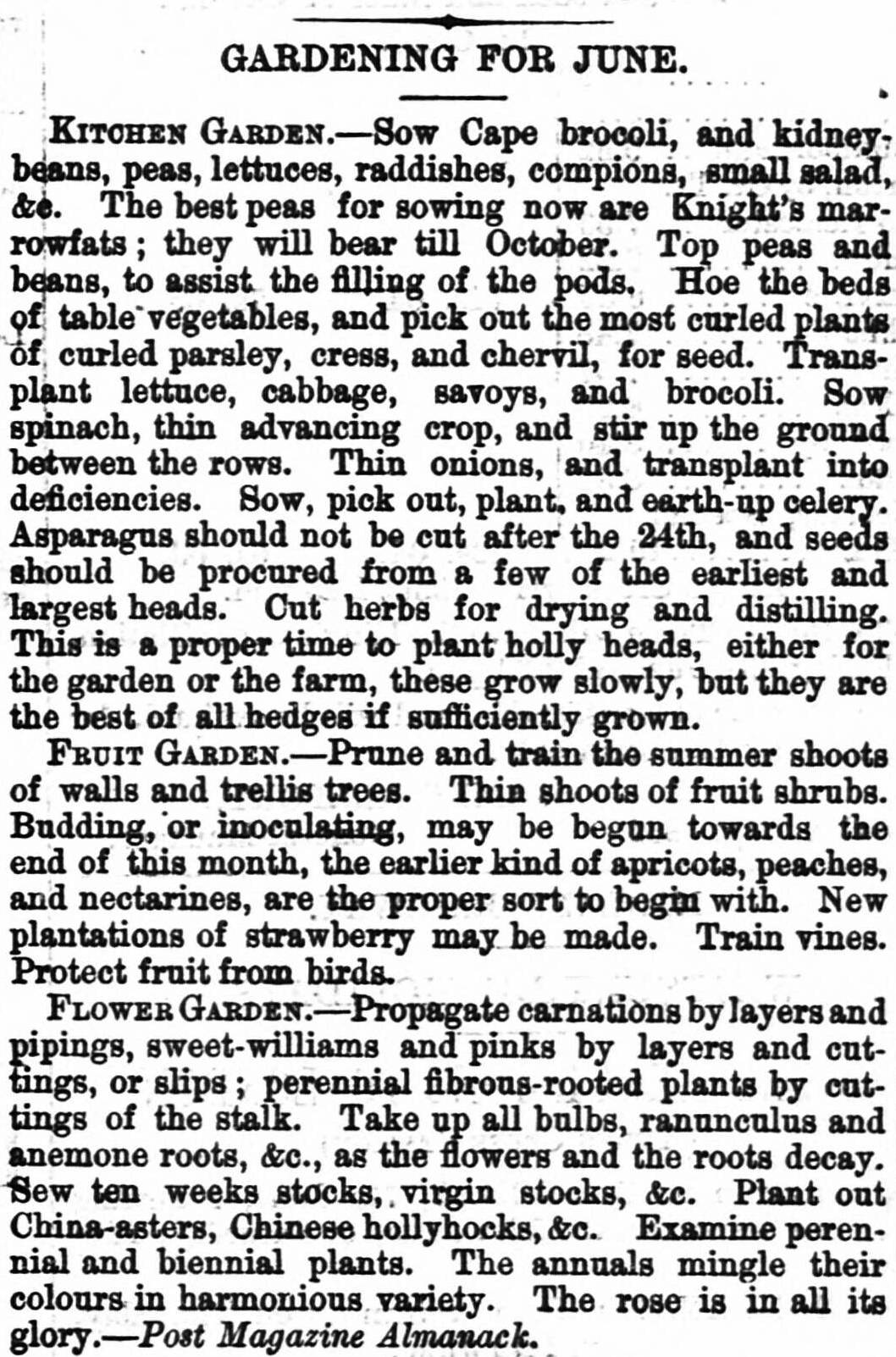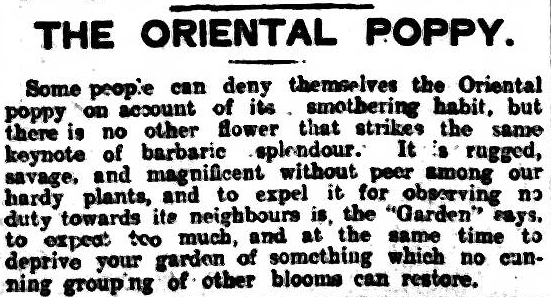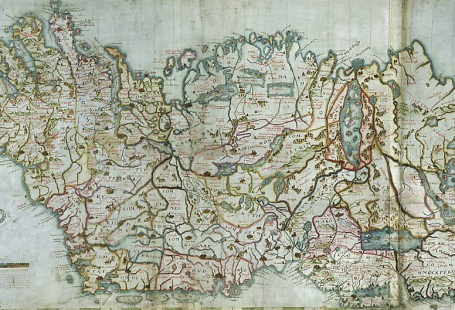
“Flowers seem to be intended for the solace of humanity”, wrote John Ruskin: “children love them; tender, cultivated people love them as they grow”.
Gardening can prove a useful and enjoyable distraction during challenging times. In June 1940, during the midst of the Second World War, the beauty of local gardens inspired mixed emotions.
The spring of 1940 and the early summer have been far more beautiful than usual, so that we wonder if nature is trying to compensate us for the tragedy of the times or if she mocks us, for in some moods we find the beauty of the countryside serves only to exasperate us, because the poet’s words are proving all too true: “Every prospect pleases,” and “only man is vile.”

‘Nature Notes’ columns provided a variety of garden-related topics and advice, from wasp’s nests, orchids, and bees to combating garden pests.
Along with ‘Nature Notes’, the topic of June gardening gave birth to the column ‘Gardening for June’, which appeared in several newspaper titles. The column provided advice for gardening in kitchen, fruit, and flower gardens.
(Click images to enlarge)
June is a good month to add to your garden, and the summer is a perfect time to indulge in wildflowers. Some of the many options for planting include Carthusian Pink, oriental poppy, bellflower, and foxglove.
Carthusian Pink
The Carthusian Pink is a perennial native to Europe and grows in habitats that are grassy and dry. The Middlesex Chronicle wrote a column on the plant in 1944.

Oriental poppy

This flower, striking in its bright orange-red colour, is native to northeastern Turkey, northern Iran, and the Caucasus. The poppies bloom in mid-summer.
If your garden is in need of a little pop, why not try the oriental poppy, noted in at least two newspapers for its ‘barbaric splendour’.
‘For sheer barbaric splendour in the border we need go no further than the oriental poppies’.
Bellflower

Bellflowers are a perfect addition to your summer garden. The Pall Mall Gazette notes that despite the ‘extraordinary number of species’ in the bellflower family, each shares the distinctive shape and the colour blue: ‘Green’s forsaken and yellow’s forsworn, / But blue is the prettiest colour that’s worn’.

(Click image to enlarge)
Foxglove

The foxglove is native to western/southwestern Europe as well as northwestern Africa and central and western Asia. There are some 20 species included in the genus Digitalis; amongst the various species, the colour of the flowering foxglove varies from whites and yellows to pinks and purples. Due to the variation in colour, foxglove is often used for ornamentation. Britannia and Eve noted that the ‘tall, speckled foxglove in an old pewter urn’ would be perfect for indoor decoration.
The Western Times dedicated one of their ‘Nature Note’ columns to foxgloves, which are ‘among our loveliest flowers’.

Discover more about English gardens and summer gardening tips by registering today!











